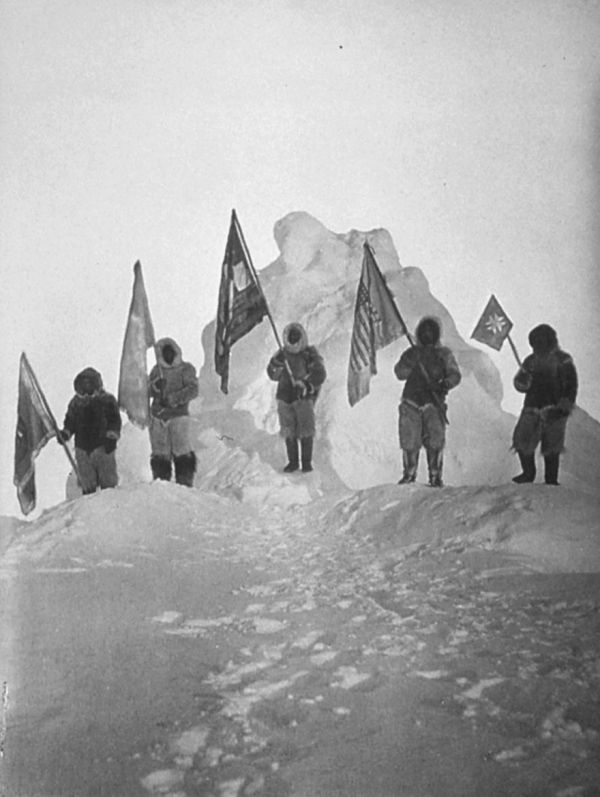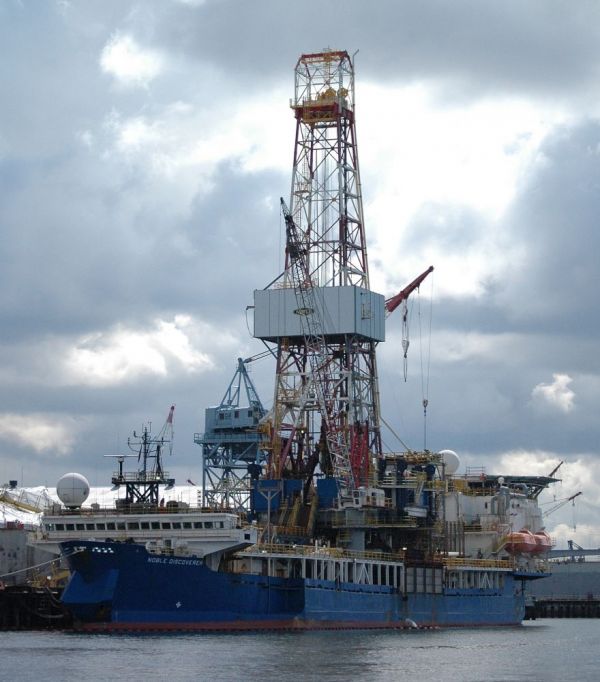The Fight to Control the Arctic Economy


The
Arctic is changing—fast. In fact, within the next 30 to 40 years, the
region could be ice-free. So why are countries and companies lining up
to get their share of the Arctic pie? And what does a melted Arctic
mean for the global economy?
Why does everyone want the Arctic?
These
days, countries are fighting tooth and nail to stake their claim to
the Arctic. But a century ago, you couldn’t give the region away. When
American explorer Robert Peary reached the North Pole in 1909, he wired
President William Howard Taft to let him know that he’d claimed the
territory for the United States. Taft’s response? “Thanks for your
interesting and generous offer. I do not know exactly what I could do
with it.”Taft’s indifference reflected the prevailing sentiment of the day: Why would anyone want an inhospitable, frozen wasteland?
The Cold War changed this line of thinking. Suddenly, the Arctic became a choice piece of real estate. It was the perfect surveillance point for listening in on enemies and the quickest bombing route between the Soviet Union and North America. By the 1950s, generals were eyeing the region as the strategic lynchpin for the next World War.
The Cold War may have ended more than two decades ago, but nations are still salivating over the Arctic—just for very different reasons. For starters, there are vast riches buried in the Arctic’s ocean floor. Geologists estimate that nearly 20 percent of the world’s undiscovered oil and natural gas may be lingering beneath its frigid waters. Indeed, the Arctic could contain more than 90 billion barrels of oil, which is enough to supply the world’s current demand for three full years. Further, the United States Geological Survey has estimated that there are 1,670 trillion cubic feet of untapped natural gas in the area, about one-third of the world’s reserves.

But as the ice melts, these hurdles are disappearing. The crowning irony of the Arctic is that by burning fossil fuels, we’ve helped to melt the Arctic, which has given us access to more fossil fuels. Soon, oil companies could be able to tap into these vast reserves without fighting through packed ice and battling icebergs.
That isn’t the only reason countries are eyeing the region, though. The new Arctic is also revolutionizing the shipping industry. In 2007, high summer temperatures melted enough ice that the Northwest Passage—the once-fabled shipping route through Arctic waters near Canada—was navigable all the way from the Atlantic to the Pacific for the first time in recorded history. This ice-free Arctic is a serious boon to any country that currently ships exports around the world. Take China, for instance. In 2009, the nation’s exports totaled an eye-popping $1.2 trillion. If Chinese companies can get their goods to the United States and Europe through the Arctic instead of the Suez Canal, they stand to cut their trips by 5,000 miles, reaping huge savings along the way. Germany also has been tempted by the prospect of going north. In September 2009, two German ships navigated across the melting Arctic ice to transport heavy cargo to Siberia. The trip was much faster, and thanks to savings on fuel and supplies, the cost was $300,000 less per ship than navigating traditional routes.
So, who owns the Arctic right now?
If you can’t visualize exactly what that means, don’t worry; neither can anyone else. Figuring out where the seabed begins and ends is a maddening task, and there’s a good deal of ambiguity about what defines a country’s continental shelf. U.N. conventions also state that if a country wants to extend its territorial claim in the Arctic, it must present geological evidence showing that an area is part of its continental shelf. But getting such a claim approved by the U.N.’s panel of scientists is far from easy. In 2001, when Russia asked to expand its territory in the region, it got shot down because of insufficient evidence.
The issue of ownership in the Arctic is further complicated by the fact that the United States has failed to ratify the U.N. Convention on the Law of the Sea, which created a lot of these rules. Ronald Reagan refused to sign the treaty in 1982, fearing that it would hinder American deep-sea mining, and it’s been sitting in limbo ever since. The Obama administration is currently attempting to convince the Senate to finally ratify the treaty, but until it does, the United States can’t expand its territory in the region.
If the ice melts, who will benefit the most?
Let’s
preface this answer by saying that an unfrozen Arctic is unequivocally
bad for the world. Nobody will be dancing in the streets when ocean
levels start to rise and thawed methane gas is being released into the
atmosphere. However, the economic reality is that if the Arctic as we
know it disappears, one country will benefit more than any
other—Greenland.At first blush, Arctic thawing seems like bad news for an island that has 80 percent of its surface covered in ice. But from a political and financial standpoint, the warmer temperatures may be just what Greenland’s 57,000 residents need.
That new stream of revenue, oddly enough, may come from global warming. Greenland’s residents hope that as the ice thaws, they’ll be able to drill down to previously inaccessible oil and mineral deposits on the northern tip of the island and offshore, where about 50 billion barrels of oil are buried. (That’s worth about $5 trillion in today’s market.) Greenland has already made a deal with Denmark to split the profits from these resources. Still, Greenland’s share will be more than enough to give it some financial independence—and put full autonomy within its reach.
Would anyone else profit from Arctic ice disappearing?
The
United States would definitely enjoy tapping into oil and gas reserves
in the Arctic, but it doesn’t need to in order to remain economically
viable. The Russian economy, however, is a different story. Because
Russia is the world’s largest exporter of natural gas and the second
largest exporter of oil, its economy depends on exploiting its natural
resources. Russians have done of good job of this lately, too. Gazprom,
the country’s state-controlled natural gas firm, was the world’s most
profitable company in 2009, with a net income of $24.5 billion. If
Russia’s natural resources dry up, its economy could tank.Since 2007, the Russian government has been building up other money-making sectors, such as technology, to reduce its reliance on oil and gas. But progress has been slow. Gaining access to a huge new pool of resources in the Arctic could give Russia a lot of wiggle room as it tries to modernize its economy.
The United States also stands to gain from the Arctic thaw. While America might not need the Arctic’s fossil fuels with the same urgency that Russia does, getting our mitts on fresh, offshore oil would mean a lot. Every U.S. President since Richard Nixon has promoted the idea that decreasing our dependence on foreign oil would improve national security. If we could only get our oil from home—say, Alaska—then our country might be safer.
About 10.4 billion barrels of oil sit under Alaska’s Arctic National Wildlife Refuge, but that’s a drop in the bucket compared to Alaska’s offshore reserves. A 2008 study from the United States Geological Survey estimated that Alaska had nearly 30 billion barrels of undiscovered oil resources—roughly four years’ worth of American demand—under its surface and coastal waters. Although drilling for that oil could be dangerous, tapping into this Arctic bonanza could significantly change our relationship with the Middle East.
But global warming is still bad, right?
People living in the Arctic region may end up in rough shape, too, despite the economic potential in their neighborhoods. Most of the infrastructure in the Arctic has been built on permafrost. When designing roads, houses, and buildings, engineers made the assumption that the permafrost was as permanently frosted as the name implies. But that’s no longer the case. When the frost thaws, it will wreak a unique type of havoc on the towns and cities. Roads will crack, warp, and buckle on top of the soggy ground, and houses will sink or collapse altogether. Additionally, water and oil pipelines will burst, and the fixes won’t be cheap; oil pipelines cost up to $2 million per mile.
In fact, all of Alaska’s problems will be expensive to fix. A Congressional study estimated that fixing the public infrastructure in Alaska could cost $6 billion by 2030. On the other side, somebody is going to get very, very rich while retrofitting these buildings and bridges to survive the warmer weather.
Clearly, the Arctic thaw is going to leave the world in a tight spot, and the drama that’s set to unfold in the region will demand global attention. So although the Arctic may be losing its ice, its stock in the political arena is just starting to heat up.

No comments:
Post a Comment